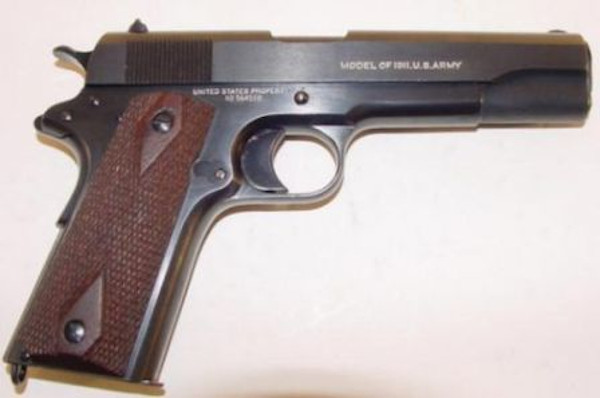The Five Conditions of Readiness of a 1911-Style Pistol
Let’s define the five readiness conditions that a 1911-style pistol can potentially be in. These can also be termed the five modes of carrying a 1911 pistol.
The late Col. Jeff Cooper, father of the Modern Technique of the Pistol, described the five modes of carrying a 1911 pistol using the terms “Condition 0,” “Condition 1,” “Condition 2,” “Condition 3,” and “Condition 4”. These conditions are listed in the order of readiness the pistol is in.
In Condition 0, the pistol is ready to fire; in Condition 1, it is one step away from firing; in Condition 2, it is two steps away from firing, and so on down to Condition 4, which is a ‘transportation’ mode, about as far away from ready to fire as possible, short of disassembly.
These conditions apply primarily to the 1911-style semi-automatic pistol, which was Col. Cooper’s favored combat pistol. I have added my explanations and descriptions to his definitions of the Conditions.
Condition 0:
A live round is in the chamber, the hammer is cocked, and the slide safety is disengaged. In this condition, the pistol is ready to be fired.
Since the shooter is holding the gun in a combat grip, we can assume that the grip safety is disengaged. We can also assume that a loaded magazine has been inserted in the gun.
Condition 1:
A live round is in the chamber, the hammer is cocked, and the slide safety is engaged. We can also assume that a magazine has been inserted in the pistol, although the magazine itself is not part of the Condition 1 description.
The grip safety may or may not be engaged, depending on whether the shooter is holding the gun in a firing position (grip safety disengaged), or the gun is holstered (grip safety engaged).
This method of carry is also known as “cocked and locked,” and is the preferred style of carrying a holstered 1911 pistol. It allows for the fastest presentation of the pistol, and the shooter needs only to disengage the slide safety in order to fire the pistol. (The grip safety will be disengaged as soon as the shooter attains a combat grip.)
Condition 1 is also the safest condition for a 1911 pistol to be in (with the exception of Condition 4, which is for disassembly or transportation only).
Condition 2:
A live round is in the chamber and the hammer is down. There is no reason I can think of for a 1911-style pistol to be in this condition. It’s impractical, and it’s downright dangerous.
Condition 3:
The chamber is empty and the hammer is down, and a charged magazine is in the gun. In order to make the gun ready to fire, the shooter must rack the slide to chamber a round (which will simultaneously cock the hammer).
This is also referred to as the “Israeli Style” of carry, and I believe Israeli armed forces are trained to rack the slide after drawing from their holster. I’ve also heard that they are quite proficient in this practice; but it seems to me a lot of extra motion, involving both hands.
In my opinion, the extra motion cannot add efficiency or speed to the draw stroke. Furthermore, if an injury has occurred to the weak hand, or that hand is otherwise occupied (fending off a blow, or grabbing an object or person), this style of carry will require a one-handed racking of the slide. That alone is a very difficult maneuver.
Condition 4:
The chamber is empty, the hammer is down, the slide safety is engaged, and no magazine is in the gun. The only time any of my guns are in this condition is when I’m in the process of cleaning or disassembling them, or transporting them to a gun store for sale or repair, or flying on a commercial airliner.

